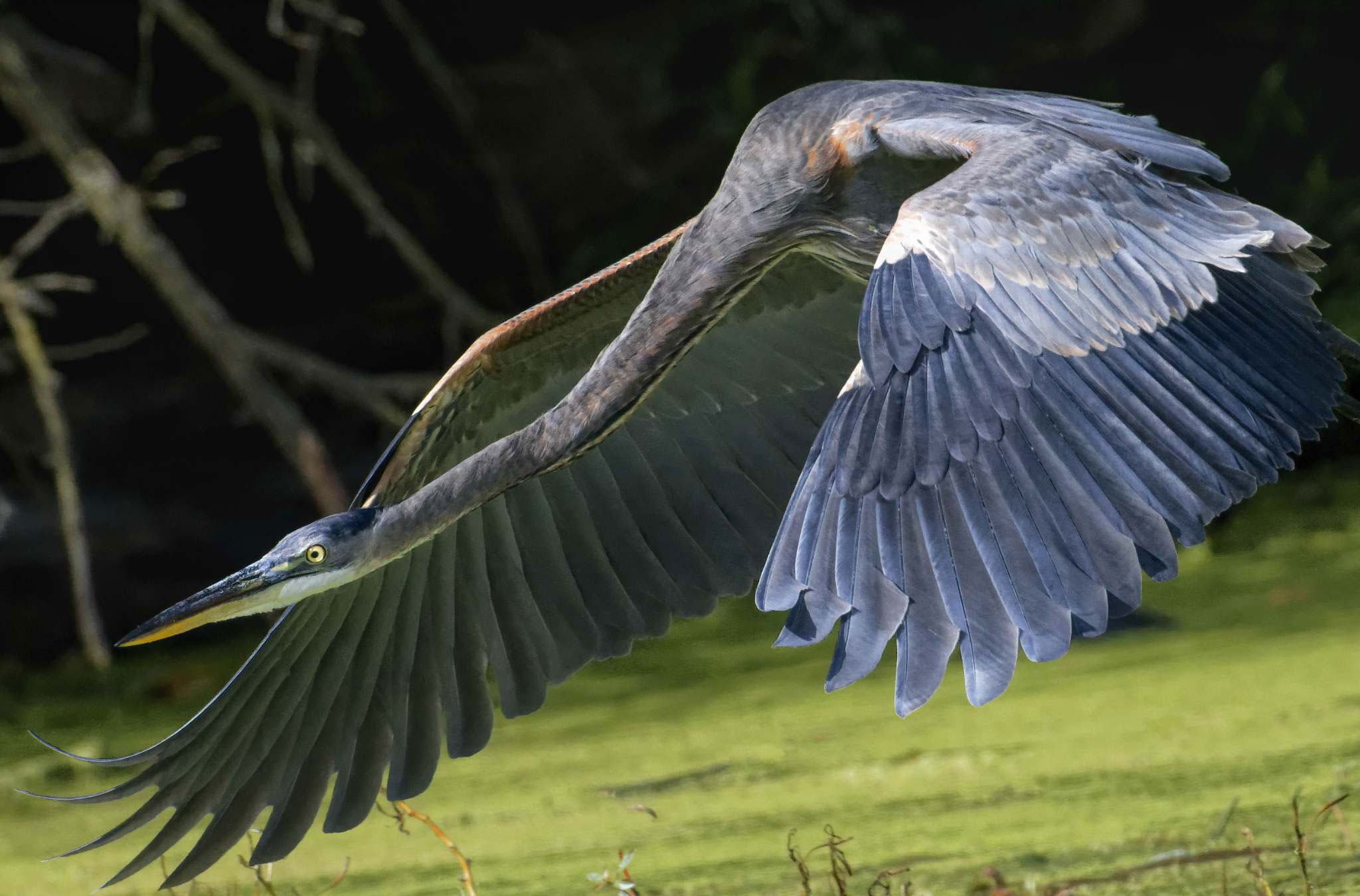| Story by Laura Kiran |
12/20/2017
Of all the herons in North America, the great blue heron is the supersize version. Standing approximately 4.5 feet tall and having a wingspan up to 6.5 feet wide, this impressive water wader easily towers over its heron brethren. Other types of herons found in the U.S. are less than half its stature, ranging from about 18 inches tall as in the case of the green heron to 2 feet in height for the black-crowned night heron.
Called “great blue” because of its unique size and blue-gray feathers, the great blue heron is also one of the most highly adaptable creatures of its species. According to the National Audubon Society, “it thrives around all kinds of waters from subtropical mangrove swamps to desert rivers to the coastline of southern Alaska.” In addition, it has an expansive palate, eating just about anything it can catch, including fish, frogs, salamanders, turtles, small mammals, insects and other birds.
One great blue heron in Florida was even seen swiping a baby alligator from its mother in hopes of a quick lunch, while another in New Mexico downed a huge carp much larger than anyone would believe it could swallow.
In the bird world, you probably don’t get to be as tall as an average 10-year-old boy without taking in some heavy meals.
Like other wading birds when hunting, the great blue heron moves slowly along or in the water in search of food. It often becomes extremely still until it’s ready to strike, using its bill to either pierce or grab its prey with amazing speed. As it forages, it’s not unusual to see a great blue heron perch on floating objects or to alternatively hunt on land.
It's this ability to adapt to its environment and its variable diet that make the great blue also able to spend the winter months farther north than most herons. This is true even in conditions where waters freeze, the National Audubon Society’s website states. The Illinois Natural History Survey conducted by the Prairie Research Institute indicates that during the winter months in Illinois, great blue herons will reside in the southern portion of the state, occasionally taking up winter residence in central Illinois, and rarely residing in northern Illinois.
But don’t fret if you are looking to get a glimpse of these majestic creatures in the upper part of the state. By late February/early March, the majority of the great blue herons that take up residence in this area will begin their return.
During the warmer months in Will County, these herons flock in great numbers along any open body of water. "Almost everyone has seen one if they have ever been near a lake, pond, river or marsh," explained Bob Bryerton, a Forest Preserve interpretive naturalist. "A number of our preserves, including Lake Renwick Heron Rookery Nature Preserve in Plainfield, Goodenow Grove Nature Preserve in Crete Township and Monee Reservoir in Monee, have them all summer long."
Bryerton said that their association with swamps and marshes, their large size and quiet stalking while hunting "seem to make them watchers of the water. While not as old on the evolutionary scale as cranes, they still conjure up great wild images. Their impressive silhouettes when flying bring up thoughts of pterodactyls."

)
)